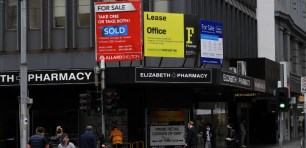
Source: Unsplash/Adam Winger.
More SMEs are now eligible to apply for business loans under the federal government’s SME Recovery Loan scheme, but with only three months remaining before the scheme is closed, one independent banking expert says it is unclear whether the change will see more businesses secure finance.
The federal government opened its SME Recovery Scheme in April, as the third iteration of government-guaranteed loans during the COVID-19 pandemic, following two different phases of the previous SME loan guarantee scheme during 2020.
The SME Recovery Scheme was originally made available to small and medium businesses that were receiving JobKeeper wage subsidies or which had been affected by floods; however, that criteria has now been removed.
So how does the scheme work and will opening it up to more businesses see more funds in the hands of SMEs?
What is the SME Recovery Loan scheme and what size loans are available?
The SME Recovery Loan scheme offers loans of up to $5 million to businesses with annual turnover of up to $250 million, with the federal government guaranteeing 80% of the loan amount.
Approved lenders can offer either secured or unsecured loans for up to 10 years, with optional repayment holidays, with interest rates capped at 7.5%.
There are currently 18 approved lenders under the scheme, including the big four banks, as well as smaller banks and fintechs.
The SME Recovery Loan scheme represented a significant expansion of the previous SME loan guarantee scheme, with higher caps on loan amounts and revenue eligibility criteria and the government taking on more of the risk.
What are the latest changes to the government’s SME loan scheme?
Treasurer Josh Frydenberg announced in August that businesses would no longer need to have received JobKeeper in the March quarter or been affected by floods to apply for the scheme, in recognition of the ongoing challenges faced by businesses affected by the pandemic.
Instead, businesses now only need to show that they have been affected by the COVID-19 pandemic to be eligible to apply for finance under the scheme.
That change comes into effect today, October 1, 2021, and will be in place until the scheme closes on December 31.
Are more small businesses now likely to apply?
Despite the federal government committing to guaranteeing a total of $40 billion in loans under its SME loan schemes, the latest figures show just $6.8 billion has been approved for 77,500 loans.
While small business owners have previously shared their frustrations with the initial design of the loan guarantee scheme, amid continued requirements from banks that the loans be secured against property, approved lenders under the latest scheme say they are expecting volumes to jump significantly over the next three months.
Judo Bank chief executive Joseph Healy told the Sydney Morning Herald the challenger bank expects to lend between $250 and $300 million under the scheme in the coming three months, having lent just under $40 million to date, while MoneyTech is also expecting to see the number of loans it approves under the scheme to increase substantially.
While independent banking expert Neil Slonim says the major banks have also endorsed the expansion of the scheme, an uptick in loans is fair from certain.
Slonim tells SmartCompany it is unclear whether the limited uptake of the scheme to date is because of “subdued demand from SMEs or lack of lending appetite by the banks”.
“Given that the government is underwriting 80% of the risk and under the scheme lenders can charge interest up to 7.5 per cent, it might have been expected that the banks would take full advantage of this scheme,” he says.
Slonim believes there should also be greater transparency about the scheme, including public disclosure by all approved lenders of the number and amount of applications they have approved and declined, as well as default rates.
“Taxpayers who are taking 80% of the risk are entitled to know how their money is being spent,” he says.
Handpicked for you

Evolving lending market boosts access to finance for SMEs: Productivity Commission



COMMENTS
SmartCompany is committed to hosting lively discussions. Help us keep the conversation useful, interesting and welcoming. We aim to publish comments quickly in the interest of promoting robust conversation, but we’re a small team and we deploy filters to protect against legal risk. Occasionally your comment may be held up while it is being reviewed, but we’re working as fast as we can to keep the conversation rolling.
The SmartCompany comment section is members-only content. Please subscribe to leave a comment.
The SmartCompany comment section is members-only content. Please login to leave a comment.